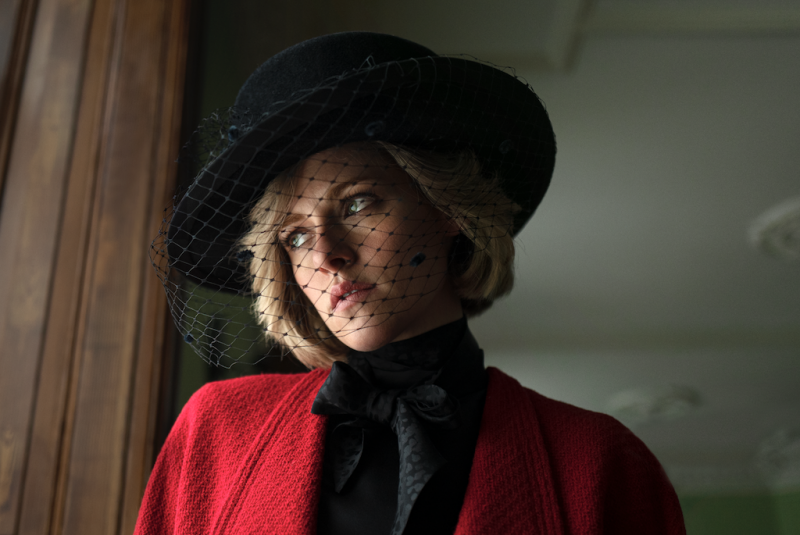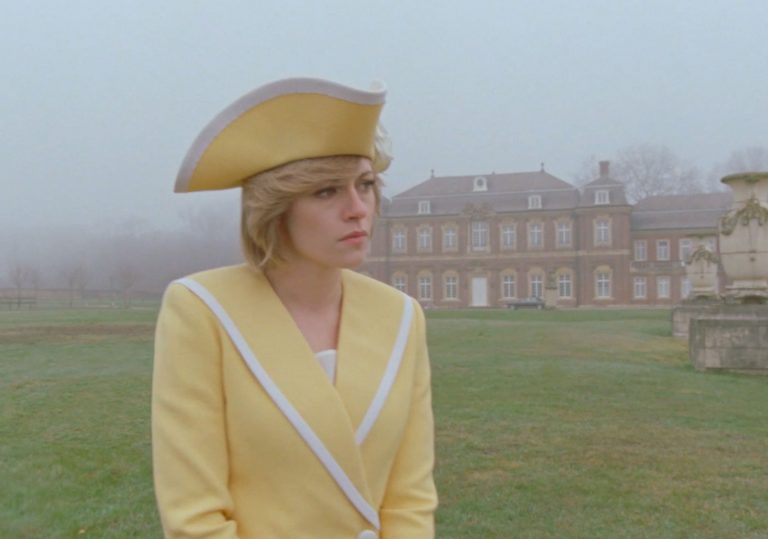Spencer review – daring, strange and deeply moving | reviews, news & interviews
Spencer review – daring, strange and deeply moving
Spencer review – daring, strange and deeply moving
Kristen Stewart is superb as Princess Diana in Pablo Larraín’s imaginative portrait

We ought to be sated with the Royal Family right now – on screen, given the riches of The Crown, and in general, what with the persistent, annoying buzz emitted by Harry and Meghan, or the odour of Andrew. So, it’s testimony to the enduring fascination with Princess Diana and the wonderful, singular filmmaking of Pablo Larraín that there’s room for more.
Spencer is an extraordinary film, daring in its conception, strange and captivating in its execution, and with a performance by Kristen Stewart that feels, quite literally, out of this world. We’re used to Brits personifying American icons, not the other way around; but Stewart nails the essence of what we remember, the rebelliousness and vulnerability, the shy humour, the luminosity, all with an immediacy that brings Diana’s painful battle with the Windsors into sharp relief.
Those who like a good old-fashioned, by-the-numbers biopic may find the approach of this self-styled “fable from a true tragedy” too eccentric. But dive in, succumb to its flow and intensity, and it’s impossible not to be deeply moved.
Larraín has always been adept at assaying psychological disturbance, whether of civilians caught up in the horrors of the Chilean dictatorship (Post Mortem), or Jackie Kennedy’s marshalling of grief after the assassination of her husband (Jackie), so the troubled Diana, almost alone against the oldest family firm on the planet, is right up his street.
In fact, there’s an obvious connection between Jackie and Spencer, both being accounts of real women whose fame grew well beyond the fact of their famous husbands; it’s pertinent that both films should use their subject’s name in the title. Why Spencer, rather than Diana? Perhaps because her battle for independence was with the family name, the brand. Steven Knight’s script also sets the action in Sandringham, the Queen’s Norfolk estate and just a stone’s throw from the Spencers’ former home – a place, and a life to which Diana longs to return.  The film posits a Windsor family Christmas, around 10 years into the marriage and with the cracks very much in evidence. They've all gathered, except for Diana, who's managed to get lost in her sports car. Arriving late, she will remain completely out of synch with everyone else for the duration of the three-day holiday.
The film posits a Windsor family Christmas, around 10 years into the marriage and with the cracks very much in evidence. They've all gathered, except for Diana, who's managed to get lost in her sports car. Arriving late, she will remain completely out of synch with everyone else for the duration of the three-day holiday.
This disconnect between the princess and her husband’s family is at the very heart of the film’s approach; she spends more time alone, or speaking with servants than she does with Charles, or the Queen. When Larraín presents the Windsors all together – at a meal, or posing for photos – they are glumly unspeaking, as if relics placed in a museum tableau. Diana avoids them whenever she can, while ignoring the highly prescribed conditions of her stay – what she eats, what she wears, even when her sons William and Harry get to open their presents. “Here there is no future,” she tells the boys. “And the past and present are the same thing.”
The tension manifests around Diana’s confrontations with Major Alistair Gregory (Timothy Spall), the Queen Mother’s equerry who’s been brought in for Christmas to beef up security and comes across as part-jailor, part Stasi snoop. Spall has always had odiousness on tap, here puckering his gaunt face in a way that makes the major a seriously intimidating presence. The exchanges between Spall and Stewart are deliciously discomforting.
In contrast, Diana’s favoured dresser (Sally Hawkins) allows glimmers of real human connection, as does the head chef (Sean Harris), whose workplace has a sign that declares: “Keep noise to a minimum. They can hear you”. And the princess’s moments with her sons reveal the funny, fond, carefree young woman who’s being suppressed.
This obviously requires a lot from Stewart, who’s on screen virtually the entire time. The actress may have drawn on her own experience, as a victim of the paparazzi, in conveying the agony of constant scrutiny; though there’s far more than Method in the performance. Stewart has that rare, mysterious rapport with the camera that allows her to display an inner life with startling, silent eloquence. And though it’s not an impersonation, at times she captures Diana’s oddly clipped and breathless delivery so perfectly that it's uncanny.
As with Jackie, Larraín ensures that the camera is all over his lead actress – tracking, circling, resting in lengthy close-up. One exceptional sequence has Diana imagining herself dancing in a variety of spaces, dresses, and modes, while actually teetering on the edge of suicide, all leading to a moment of exhilarating epiphany.
Talented cinematographer Claire Mathon, whose previous work includes Portrait of a Lady on Fire and Atlantics, excels again here, with an appropriately wintry palette and gorgeously lit interiors. The best parts of Jonny Greenwood’s score have an improvisational jazzy feel that chimes with the personality of a woman reaching for the point when she is going to break free.
The future of Arts Journalism
You can stop theartsdesk.com closing!
We urgently need financing to survive. Our fundraising drive has thus far raised £49,000 but we need to reach £100,000 or we will be forced to close. Please contribute here: https://gofund.me/c3f6033d
And if you can forward this information to anyone who might assist, we’d be grateful.

Subscribe to theartsdesk.com
Thank you for continuing to read our work on theartsdesk.com. For unlimited access to every article in its entirety, including our archive of more than 15,000 pieces, we're asking for £5 per month or £40 per year. We feel it's a very good deal, and hope you do too.
To take a subscription now simply click here.
And if you're looking for that extra gift for a friend or family member, why not treat them to a theartsdesk.com gift subscription?
more Film
 Steve review - educator in crisis
Cillian Murphy excels as a troubled headmaster working with delinquent boys
Steve review - educator in crisis
Cillian Murphy excels as a troubled headmaster working with delinquent boys
 Can I get a Witness? review - time to die before you get old
Ann Marie Fleming directs Sandra Oh in dystopian fantasy that fails to ignite
Can I get a Witness? review - time to die before you get old
Ann Marie Fleming directs Sandra Oh in dystopian fantasy that fails to ignite
 Happyend review - the kids are never alright
In this futuristic blackboard jungle everything is a bit too manicured
Happyend review - the kids are never alright
In this futuristic blackboard jungle everything is a bit too manicured
 Robert Redford (1936-2025)
The star was more admired within the screen trade than by the critics
Robert Redford (1936-2025)
The star was more admired within the screen trade than by the critics
 Blu-ray: The Sons of Great Bear
DEFA's first 'Red Western': a revisionist take on colonial expansion
Blu-ray: The Sons of Great Bear
DEFA's first 'Red Western': a revisionist take on colonial expansion
 Spinal Tap II: The End Continues review - comedy rock band fails to revive past glories
Belated satirical sequel runs out of gas
Spinal Tap II: The End Continues review - comedy rock band fails to revive past glories
Belated satirical sequel runs out of gas
 Downton Abbey: The Grand Finale review - an attemptedly elegiac final chapter haunted by its past
Noel Coward is a welcome visitor to the insular world of the hit series
Downton Abbey: The Grand Finale review - an attemptedly elegiac final chapter haunted by its past
Noel Coward is a welcome visitor to the insular world of the hit series
 Islands review - sunshine noir serves an ace
Sam Riley is the holiday resort tennis pro in over his head
Islands review - sunshine noir serves an ace
Sam Riley is the holiday resort tennis pro in over his head
 theartsdesk Q&A: actor Sam Riley on playing a washed-up loner in the thriller 'Islands'
The actor discusses his love of self-destructive characters and the problem with fame
theartsdesk Q&A: actor Sam Riley on playing a washed-up loner in the thriller 'Islands'
The actor discusses his love of self-destructive characters and the problem with fame
 Honey Don’t! review - film noir in the bright sun
A Coen brother with a blood-simple gumshoe caper
Honey Don’t! review - film noir in the bright sun
A Coen brother with a blood-simple gumshoe caper
 The Courageous review - Ophélia Kolb excels as a single mother on the edge
Jasmin Gordon's directorial debut features strong performances but leaves too much unexplained
The Courageous review - Ophélia Kolb excels as a single mother on the edge
Jasmin Gordon's directorial debut features strong performances but leaves too much unexplained

Add comment